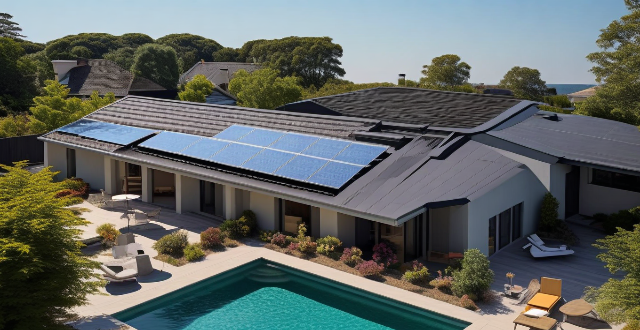Green roofs contribute to energy efficiency in buildings through insulation and temperature regulation, reflectivity, evapotranspiration cooling, extended roof lifespan, improved air quality, noise reduction, and rainwater management.

How Do Green Roofs Contribute to Energy Efficiency in Buildings?
Green roofs, a type of vegetative layer installed on the rooftops of buildings, have become increasingly popular due to their numerous environmental benefits, including improved energy efficiency. Here's how they contribute to energy savings:
Insulation and Temperature Regulation
- Thermal Insulation: The layers of soil and vegetation on green roofs provide additional insulation to the building, reducing heat loss in winter and gain in summer.
- Temperature Moderation: Plants and soil absorb sunlight and convert it into thermal energy, which helps moderate the temperature of the building below. This can lead to reduced cooling needs during hot days and less heating required during cold nights.
Reflectivity and Evapotranspiration
- Reflective Properties: The plants on green roofs can reflect a portion of sunlight, reducing the amount of heat absorbed by the building.
- Evapotranspiration Cooling: Plants release water vapor through evapotranspiration, which has a cooling effect on both the roof surface and the surrounding air.
Extended Roof Lifespan
- Protection from Weathering: The layers of green roofs protect the underlying roofing materials from direct exposure to UV rays and extreme temperatures, potentially extending the lifespan of the roof.
- Reduced Maintenance Costs: With an extended lifespan comes reduced maintenance costs over time, contributing to long-term energy and financial savings.
Air Quality Improvement
- Carbon Sequestration: Plants absorb carbon dioxide, helping to reduce the carbon footprint associated with heating and cooling buildings.
- Pollution Absorption: Green roofs can also filter pollutants from the air, improving indoor air quality and reducing the strain on HVAC systems.
Noise Reduction
- Sound Insulation: The soil and plant materials can absorb noise, making green roofs beneficial for buildings located in noisy environments or urban areas.
Rainwater Management
- Stormwater Mitigation: Green roofs can absorb and retain rainwater, reducing the burden on municipal stormwater systems and potentially lowering water bills.
- Reduced Runoff: By absorbing rainwater, green roofs decrease the amount of water that becomes runoff, which can otherwise cause flooding and erosion issues.
In conclusion, green roofs offer multiple pathways to enhance energy efficiency in buildings. From providing natural insulation and temperature control to reducing the load on HVAC systems through improved air quality and evaporative cooling, these eco-friendly roofs are a sustainable solution for energy-conscious architects and building owners alike.